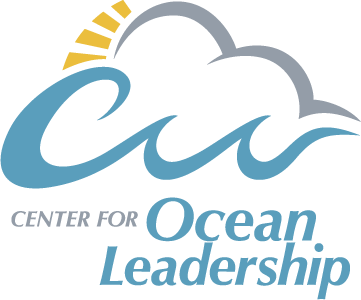Ocean Observing
Resources

Ocean Observing
Most of the global ocean remains unexplored, yet we know it supports life on our planet and that it is changing in ways that may alter the support and services it provides. These changes are caused by the compounding factors of pollution (e.g., plastics, noise, oil spills), unsustainable fishing practices, and human-induced climate change. As these changes can impact food security, public health, coastal community resilience, and the economy, our need for information on ocean patterns, conditions, and processes is growing exponentially. High-quality, interoperable data is critical for understanding our ocean systems and using marine resources in sustainable ways.
Humans have measured ocean properties for centuries using crude instruments (e.g., Charles Darwin and the Challenger Expedition). This was – and remains – no easy feat due to the vastness and depth of most of the ocean. Today, in addition to ships (e.g., R/V Sikuliaq, Okeanos Explorer, and the forthcoming RCRV Taani), scientists use sophisticated technologies including satellites, drones, autonomous underwater vehicles, radars, buoys, tide gauges, and tags on marine species. However, bringing all this collected data together for use in a standardized way has brought about a new challenge. Ocean experts in government, academia, and industry are working to address this wealth of collected data so that the value of the data can be maximized through integration and use by a growing number of stakeholders.
Topics To Explore
Webinar Series
View the NOSB’s ocean observing-related Professional Development Webinar Series recording to learn about global ocean observing techniques, with an emphasis on seafloor observations.
2019 Professional Development Webinars: Haley Cabaniss, PhD Candidate
The 2019-2020 Multidisciplinary drifting Observatory for the Study of Arctic Climate (MOSAiC) expedition was a year-long drift experiment in the central Arctic with the goal of better understanding how the Arctic system works: how its ocean, sea ice, atmosphere and ecosystem interact with one another throughout an entire year. Sea ice geophysicist Melinda Webster was deployed to the field campaign during one of the most transformative times of the year, from spring to autumn. This period was rich with opportunities to study the seasonal evolution of the sea ice cover as it transitioned from a cold, snow-covered icescape to a fragmented ice pack riddled with melt ponds and drifting rapidly away from the North Pole. This presentation will explain the seasonal evolution of Arctic sea ice processes and properties, how they connect to the big picture of the Arctic system and climate change, and why the combination of field data, satellite measurements, and climate model experiments is one of the most powerful tools in science.
More Places To Learn
GOOS 2030 Strategy (Global Ocean Observing System)
Ocean as a Lab: Whale Tagging (NOAA)
What is the difference between an AUV and ROV? (NOAA)
Saildrones: Cutting Edge Technology for Ocean Research (NOAA Fisheries)
Using AI to Explore Oceans (MIT)
Ocean Observations Biodiversity Video (Census of Marine Life)
Sustaining Ocean Observations to Understand Future Changes in Earth’s Climate (NASEM)
Ocean Enterprise Study (IOOS)

